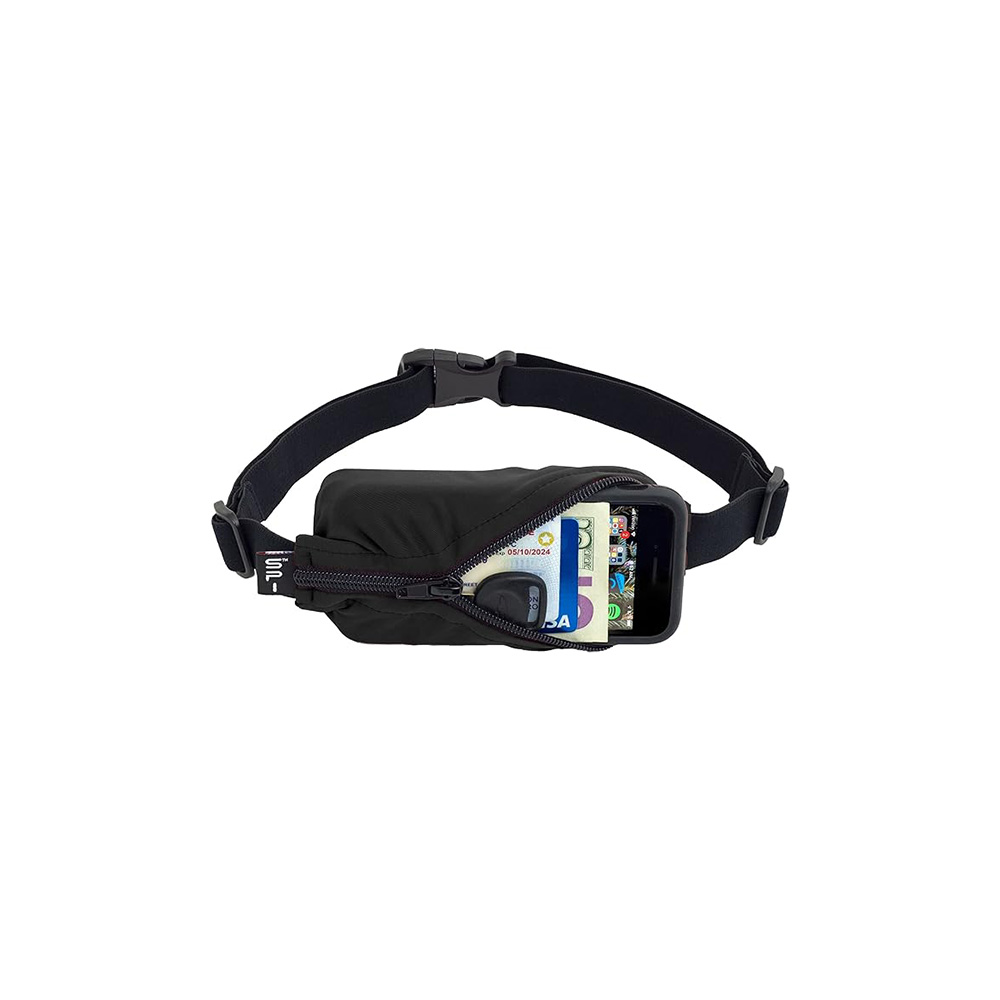
This guide is step by step. It aims to provide practical tips on how to wear a running belt. The goal is to prevent chafing during long runs. Chafing can come from friction between the skin and the belt. It causes discomfort and sometimes even pain. This guide will teach runners how to avoid chafing. It will ensure a more comfortable and enjoyable run.
Top Running Belts: 10 Methods to Carry Your Phone
Select the Right Running Belt
Choose a running belt made of moisture-wicking material. It should fit on your waist but not too tight. The material should draw sweat away from your body to keep your belongings dry during your run. Look for belts with adjustable straps so you can customize the fit to your comfort level. For example, the XYZ running belt has stretchy, breathable fabric. It wicks away moisture and lets you adjust the waistband for a perfect fit. When trying on the belt, make sure it sits on your waist without bouncing as you move. Ensure it is snug enough to stay in place but not too tight that it restricts your movement.
Apply Anti-Chafing Cream
Before putting on the belt, apply anti-chafing cream or petroleum jelly. Put it on areas prone to chafing, such as the waistline or thighs. This step is vital. It prevents friction and irritation from movement during your activities. To apply, squeeze a small amount of cream or jelly onto your hand. Then, smooth it onto the skin in a thin layer, making sure to cover the areas that rub against your clothing or gear. Allow the product to dry and absorb for a minute before putting on your belt. Follow this step. It will ensure your comfort during physical activities.
Wear Moisture-Wicking Clothing
Choose moisture-wicking clothing. It will cut sweat while wearing a running belt for long distances. Fabrics that wick moisture pull sweat from your skin. They keep you drier and reduce the risk of chafing. This makes your runs more comfy. It stops skin irritation from too much moisture. For a better run, choose clothing made from materials like polyester or nylon. They have moisture-wicking properties. Choosing the right clothing can improve your performance and enjoyment during long runs. You can avoid chafing.
Properly Adjust the Belt
Ensure that the running belt is not too loose or too tight to prevent discomfort during your workout. Adjust it to sit on your waist. It should not rub your skin. To do this, loosen or tighten the belt straps as needed until you find the right fit for you. Pull the straps to tighten the belt, or release them to loosen it. Make sure the belt is secure but still allows for comfortable movement as you exercise.
Avoid chafing or irritation. Check that the belt is snug against your waist, but not too tight. Move around a bit to ensure it stays in place while adjusting it. Your running belt should feel secure and comfortable. It should stay that way throughout your workout. This will let you focus on your exercise, without any distractions. Adjust as needed. Find the perfect balance of security and comfort for you.
Change Positions Periodically
If you feel any discomfort or notice rubbing on a spot, move the belt up or down. Or, move it left or right. This will spread the pressure more. For example, if you usually put the belt at the center of your waist, try moving it an inch to the right. See how it feels. Keep trying small changes. Do this until you find a position that feels best for your body.
Another example is to shift the position of the belt every few minutes. For instance, rotate the belt clockwise every five minutes. Then, rotate it counterclockwise after another five minutes. This constant movement will prevent friction from building up in one area. This will reduce the chances of chafing. Try this method on your next treadmill session. See if it improves comfort and performance.
Stay Hydrated
- Drink at least 8-10 cups of water daily for proper hydration. Carry a refillable water bottle to track your intake throughout the day.
- Remember to sip water before, during, and after physical activities to prevent dehydration.
- Avoid drinking too much caffeine or sugar. They can make you dehydrated.
- Monitor your urine color. Aim for pale yellow to clear. This ensures you are well hydrated.
- Be proactive in hydrating. Do this especially in hot weather or during intense exercise. It will prevent chafing and discomfort.
Clean and Dry the Belt
- Wipe Down: After each run, grab a clean cloth. Wipe down the running belt. It will remove sweat, dirt, and bacteria from your workout. Make sure to reach all areas, including corners and edges.
- Air Dry: Once the belt is wiped down, leave it in a well-ventilated area to air dry completely. Avoid folding or storing the treadmill with a damp belt, as this can lead to mold and mildew growth over time.
- Use a Mild Cleaner: If the belt is particularly sweaty or dirty, you can use a mild soapy solution to clean it. Gently scrub the belt with a soft brush or cloth, then rinse with clean water and dry thoroughly.
- Regular Maintenance: To prevent bacteria buildup, you must clean the belt. It’s essential for regular treadmill maintenance. Keep your running belt clean and dry. This will make it last longer. It will also ensure a more comfy and hygienic workout.
Remember, a clean belt is key. It prevents chafing and keeps the treadmill clean. By following these steps after each run, you’ll keep your treadmill in top shape. It will stay that way for many workouts.
Preventing Chafing for Runners
To prevent chafing when wearing a running belt for long distances, you must choose the right belt. Use anti-chafing techniques. Wear suitable clothing. Adjust the belt well. Move around. Stay hydrated. And keep the belt clean. Follow these guidelines. They will let you run and with little risk of chafing. Happy running!
Essential Gear List
Preventing Belt Chafing
How to Properly Wear Your Running Belt for Maximum Comfort and Functionality
- Adjust the running belt to fit snugly around your waist to prevent it from bouncing while you run
- Place your essentials such as phone, keys, ID, or energy gel in the pockets of the running belt
- Position the belt in the front or back where it feels most comfortable for you while running
- Make sure the belt does not restrict your movement – you should be able to run comfortably with it on
- Practice wearing the running belt during short runs. Do this before using it for longer distances to get used to the feel.
Belt Up: Your Running Belt FAQs Answered
When you are looking for a running belt, you should consider specific features. Pockets are essential for carrying items like your phone, keys, energy gels, or ID when you’re out for a run. Water bottle holders and pockets for small bottles are hydration options. They are ideal for staying hydrated during longer runs. Reflective elements are also important for safety when running in low light conditions. Also, look for adjustable straps. They provide a comfy and secure fit. Sweat-resistant material is another helpful feature to look for in a running belt.
Yes, there are tricks to prevent bouncing or riding up. You use them when wearing a running belt. Here are some tips to help you avoid these issues:
- Proper Fit: Ensure that you adjust the running belt to fit snugly around your waist without being too tight. This will help prevent any bouncing or slipping during your run.
- Positioning: Place the running belt around your natural waistline. This is usually above your hips and below your ribcage. This will help keep the belt secure and prevent it from riding up as you run.
- Minimal Items: Try not to overload the running belt with too many items. Keeping it light will reduce bouncing. It will shift less during your workout.
- Anti-Slip Material: Look for running belts with anti-slip features. These include straps that you can adjust, secure buckles, and grippy material inside. It keeps the strap in place.
By following these techniques, you can enjoy a comfortable and hassle-free running experience with your running belt.
Yes, there are different ways to wear a running belt depending on the type of exercises you are doing. For example, if you are going for a long run, you may want to wear the running belt around your waist. It will keep your essentials secure and easy to reach. If you do intense intervals or dynamic moves, wear the belt across your chest. This will keep it in place during your workout. Always adjust the fit and position of your running belt. Do this to suit the type of exercise you are doing. It will make you more comfortable and make things easier.
When selecting a running belt, consider your body type and running style. Different body types may require different styles for a proper fit and comfort. For example, if you have a larger body type, you may need a wider belt with more support. Additionally, your running style can also influence your choice. If you prefer long-distance running, you might want a belt that can hold more items. For example, water bottles or energy gels. In the end, pick a running belt that fits your body and running needs. It will improve your running.










 Home
Home  Blog
Blog
Could you recommend a specific brand of anti-chafing cream that works well for long-distance running? I've tried a few but haven't found one that works effectively yet.
I recommend trying 'Body Glide' or '2Toms SportShield' as they are popular choices among runners for preventing chafing during long distances.
I'm planning to participate in my first half-marathon soon, and these tips will surely come in handy. Do you have any additional advice specifically for long-distance races?
Congratulations on signing up for your first half-marathon! In addition to these tips, I would recommend gradually increasing your mileage in training and practicing your race nutrition strategy for optimal performance.
Thank you for sharing your positive experience! I'm glad to hear that the tips have been helpful for you.
I have struggled with chafing when wearing a running belt in the past. Your guide provides practical solutions that I can't wait to try out on my next long run. Thank you for sharing these valuable insights!
After following these steps, I can confidently say that chafing is no longer a concern for me during long runs. Thank you for such a comprehensive guide!
I'd love to see an article on how to properly clean and maintain running belts to ensure they last longer. Do you have any tips for that?
That's a great suggestion! I'll definitely consider writing an article on that topic in the future. Thank you for the idea!
I recently started wearing a running belt for long distances and following these tips has been a game-changer! The anti-chafing cream really made a difference, and adjusting the belt properly helped prevent any discomfort. Thank you for these helpful suggestions!